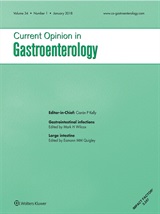Jafri SM, Arora G, Triadafilopoulos G
Curr Opin Gastroenterol. 2009 Jul;25(4):352-7.
PURPOSE OF REVIEW:
We critically analyze existing endoscopy-based interventions for gastroesophageal reflux disease (GERD). The focus is on the effectiveness of available procedures and to delineate goals for future research.
RECENT FINDINGS:
Recent evaluations of the EndoCinch system reveal poor long-term results and no significant improvement over sham therapy due to poor apposition of mucosa with stitches. Recent studies with transoral incisionless fundoplication demonstrate improvement in GERD symptoms, quality of life, esophageal acid exposure, esophagitis, resting lower esophageal sphincter pressure and medication use. The SRS endoscopic stapling system creates a partial fundoplication wrap, and a preliminary study demonstrated improved symptoms and acid exposure. The Stretta system delivers radiofrequency energy to the gastroesophageal junction. A large prospective series demonstrates sustained improvement in GERD symptoms, quality of life and proton pump inhibitor therapy elimination after radiofrequency ablation at the gastroesophageal junction. A sham-controlled study showed improvement in symptoms at 6 months.
SUMMARY:
EndoCinch plication requires further study and modification of technique before it can be recommended for general clinical use. Transoral incisionless fundoplication is a very promising procedure in its early stages of development. Further evaluation of procedure safety and durability is needed. Radiofrequency ablation therapy has been reintroduced and may have potential in patients with refractory GERD.
Link to abstract on PubMed: Jafri, SM, et al; Curr Opin Gastroenterol. 2009 Jul;25(4):352-7.


